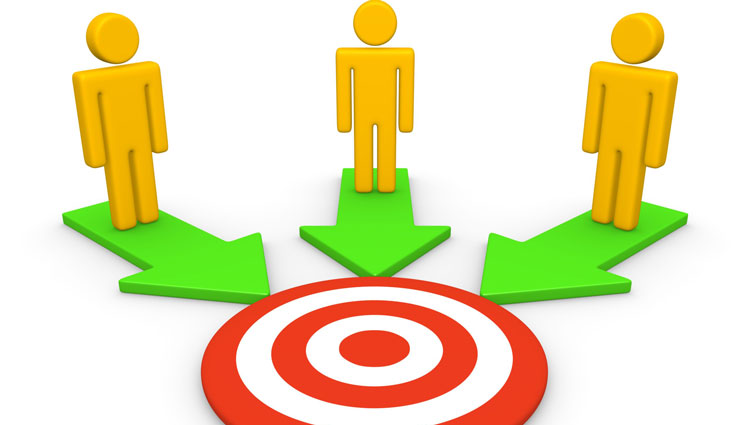The philanthropic landscape isn’t just shifting—it’s accelerating past unprepared advisors.
As $84 trillion prepares to transfer from Baby Boomers to younger generations, donors are aggressively incorporating charitable giving into their estate plans. Yet fewer than 5% of financial advisors are even having these conversations.
This isn’t just a missed opportunity—it’s professional negligence. When clients initiate charitable vehicles without advisor involvement, advisors don’t just lose visibility—they lose relevance. But there’s a smarter play: build intentional relationships with nonprofit organizations before your clients do.
The brutal reality: Your clients don’t wait for permission to give.
Let’s unpack why this triangular alliance—financial advisor + donor + nonprofit—creates stronger outcomes for everyone involved, and why advisors who ignore this trend are gambling with their future.
By the Numbers
The Philanthropic Opportunity
- $84 trillion will transfer from Baby Boomers to younger generations over the next 25 years
- $557 billion was donated to charity by Americans in 2023, with planned gifts accounting for nearly 80% of the largest donations
- 67% of high-net-worth individuals consider charitable giving essential to their legacy planning
- 23% report having meaningful conversations about philanthropy with their financial advisor
- Less than 5% of financial advisors proactively discuss planned giving with clients
Sources: Cerulli Associates, Giving USA Foundation, UBS Investor Watch
Rethinking Control, Collaboration, and Charitable Capital
1. The Hidden Risk: Your Competition Is Already There
When a donor establishes a charitable remainder trust (CRT), a donor-advised fund (DAF), or designates a nonprofit as a beneficiary, that wealth doesn’t just move outside your purview—it moves to your competition. Fidelity Charitable, Schwab Charitable, and savvy planned giving consultants are actively courting your clients. They’re not waiting for referrals—they’re creating them.
Case in Point:
A longtime client of a wealth management firm donates appreciated stock to a university, creating a $1 million charitable remainder trust. The nonprofit brings in their own planned giving advisor to manage the trust. The client’s original advisor? Left out—and $1 million in AUM disappears overnight.
But what if the advisor had a standing relationship with the university’s development office? They could’ve been the first call, not the last.
The uncomfortable truth: While you’re focused on market returns, your clients are making their most emotionally driven financial decisions without you.
2. Nonprofits Are Hungry for Expertise (And They Have Your Clients)
The vast majority of nonprofits lack internal expertise in charitable financial planning. Gift officers are not CPAs or JDs. They’re often overextended generalists tasked with fundraising, stewardship, and reporting.
What they do have, however, are donors—including your high-net-worth clients—seeking guidance on how to give smarter.
If an advisor builds rapport with a nonprofit’s development team, the organization will actively refer donors back to that advisor, creating a mutually beneficial cycle:
- The nonprofit gets larger, smarter gifts
- The donor gets better financial outcomes
- The advisor gains or retains AUM
Here’s what’s happening right now: Nonprofits are referring donors to advisors who understand philanthropy. If that’s not you, it’s someone else building relationships with your clients.
3. Donors Want Integrated, Trust-Based Planning
From the donor’s perspective, the ideal scenario is seamless collaboration. Most high-net-worth individuals don’t want to play middleman between their advisor and their favorite cause. They want confidence that everyone’s aligned.
When a nonprofit and a financial advisor already have a working relationship, it signals to the donor:
- This advisor understands charitable giving
- This nonprofit values professional financial input
- I don’t have to worry about conflicting advice or ego battles
It becomes easier for the donor to say: “Let’s sit down together and plan my legacy.”
The danger: Donors who feel their advisor doesn’t “get” their charitable motivations will find advisors who do.
4. Why Advisors Are Losing This Battle
Let’s be blunt about why advisors avoid nonprofit relationships:
Excuse: “Only ultra-wealthy clients do planned giving.”
Reality: Middle-class Americans leave bequests daily—while you focus elsewhere.
Excuse: “I’ll lose control of the money.”
Reality: You’ve already lost it by not being in the conversation.
Excuse: “It’s not my job.”
Reality: Your clients disagree—and they’re finding advisors who understand what matters most to them.
The wake-up call: Advisors who think they’re in the business of hoarding assets rather than stewarding legacy are missing the entire point of wealth management in the 21st century.
A Practical Blueprint for Advisors
If you’re a financial advisor who wants to stay relevant in the philanthropic era—and stop hemorrhaging assets to competitors who “get it”—here’s your step-by-step battle plan:
1. Host a Joint Seminar
Partner with a local nonprofit to offer a live or virtual seminar on “Tax-Smart Giving Strategies for Donors.” These events position you as a subject-matter expert and allow the nonprofit to add value to their donor base without additional cost or staff burden.
Bonus: You’re not just showcasing expertise—you’re building trust with both donors and nonprofit professionals who will remember you when the big conversations happen.
2. Offer Free Consultations
Let the nonprofit’s planned giving officer (or development director) know that you’re available for no-obligation charitable planning consultations with donors. This positions you as the go-to resource while demonstrating genuine partnership.
Make it clear: Your goal is to help donors give smarter—not poach clients. This goodwill investment pays compound returns.
3. Build a Co-Branded Toolkit
Work with the nonprofit to create a concise, plain-English guide explaining common giving vehicles:
- Charitable Remainder Trusts
- Gift Annuities
- Donor-Advised Funds
- IRA Beneficiary Designations
- Bequests
Design the toolkit with both your branding and the nonprofit’s—so it feels collaborative, not transactional. This toolkit becomes your calling card in the philanthropic space.
4. Stay Visible (Without Selling)
Attend the nonprofit’s:
- Donor appreciation events
- Board meetings (as a guest)
- Major gift strategy sessions
- Public galas or award dinners
Don’t pitch. Just be present, helpful, and available. When the big gift conversation arises—and it will—you’ll already be a trusted presence in the room.
5. Learn Planned Giving Yourself
If you’re not well-versed in charitable vehicles and legacy tools, you’re already behind. Many financial advisors avoid this topic simply because it sounds technical or uncomfortable.
Stop making excuses. Take a streamlined course designed for busy professionals—like the Planned Giving Boot Camp from PlannedGiving.com.
It’s practical, jargon-free, and laser-focused on helping you integrate philanthropy into your existing financial planning services.
6. What’s in It for Nonprofits?
- Access to expert advice they don’t have in-house
- Larger, more complex gifts that might not happen otherwise
- A deeper trust relationship with the donor
- A reputation for professionalism and donor-centered planning
By embracing trusted financial advisors, nonprofits reduce friction and increase gift frequency and size. They need you as much as you need them.
This blueprint isn’t theoretical. It’s already working for top financial advisors who are growing their practices by helping donors give with clarity and confidence. While their competitors lose clients to philanthropy, these advisors are gaining them.
The Future Is Collaborative—Are You In or Out?
The era of isolated planning is dead. Financial advisors who fail to adapt—who don’t integrate planned giving or cultivate nonprofit relationships—aren’t just missing opportunities. They’re becoming irrelevant in the most meaningful financial conversations their clients will ever have.
Your clients are going to give. The nonprofits they support are going to facilitate that giving. The only question is whether you’ll be the trusted advisor guiding those decisions—or the advisor they used to have who never understood what mattered most to them.
The choice is stark: Lead this conversation or lose it.
The smartest advisors won’t wait until the donor brings them to the table. They’ll already be seated, waiting—while their competitors wonder where their clients went.
Let’s rewrite the playbook. Not “advisor vs. nonprofit,” but “advisor WITH nonprofit.”
Call to Action & Summary Takeaway
Summary
Financial advisors who fail to connect with nonprofits aren't just missing opportunities—they're surrendering their clients' most important financial decisions to competitors who understand that legacy matters more than returns.
The solution isn't complicated—it's collaborative. Start the conversation. Stay in the room. Stop losing clients to causes.
Call to Action
Nonprofits: Want a donor-friendly advisor in your corner? Reach out—we can connect you with professionals who "get it."
Advisors: Ready to stop losing assets to philanthropy and start winning them through it? Join our Planned Giving Boot Camp.
Click Here





